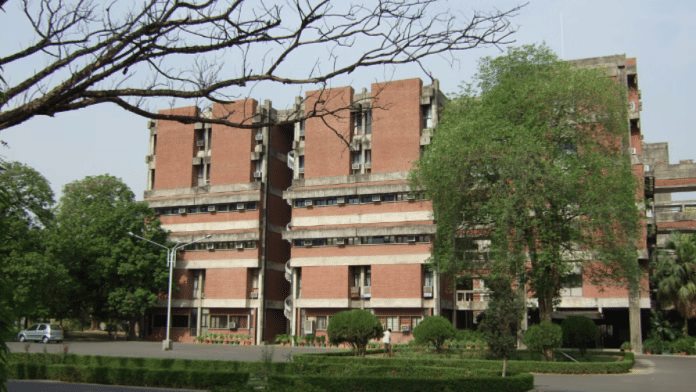New Delhi: The minimum cutoff for admissions to the prestigious Indian Institutes of Technology (IITs) has dropped significantly this year to a three-year low, falling nearly 10 percentage points—from 30.34 percent last year to 20.56 percent—according to the JEE (Advanced) results announced on Monday.
The Joint Entrance Examination (JEE) (Advanced) 2025 was conducted by IIT Kanpur on 18 May. A total of 1,80,422 candidates appeared for the exam, of which 54,378 (approximately 30.1 percent) have qualified. The pass percentage has increased this year from 26.7 percent last year when 48,248 out of 1,80,422 candidates had qualified.
Every year, the IITs announce the minimum aggregate marks and subject-wise marks for admission, which are calculated based on the total marks obtained in Mathematics, Physics, and Chemistry in the JEE (Advanced) exam. Candidates have to satisfy both subject-wise and aggregate qualifying marks to be included in the rank list.
The minimum aggregate cutoff for the general category this year is 20.56 percent, which is 10 percentage points lower than last year’s 30.34 percent.
Earlier, a similar drop was seen in 2020, when it dropped to 17.42 percent amid the Covid pandemic, down from 25 percent in both 2019 and 2018.
In 2021, the minimum cutoff remained at 17.5 percent, and in 2022, it further declined to 15.28 percent. However, it rebounded to 23.89 percent in 2023 and rose to 30.28 percent in 2024.
While IIT Kanpur officials declined to comment on the reasons behind this year’s drop, teachers and experts attributed the decrease to the perceived difficulty of JEE Advanced 2025. Although the overall exam pattern remained consistent, certain sections—particularly Physics and Mathematics—were reported to be more challenging than in previous years.
“Both physics and mathematics exams were tough comparatively and it is due to this that the cutoff has gone down,” a physics teacher at Prudence coaching in Kota said.
Keshav Agarwal, President of the Coaching Federation of India, said this year’s Physics paper raised serious concerns among both students and educators. “Around five questions were challenged by candidates, following which one was dropped and the answer to another was revised. Such issues not only undermine the credibility of a highly competitive exam but also cause significant stress and confusion among aspirants,” he said.
“We hope that such fundamental oversights are addressed proactively, and the sanctity of the examination is upheld—not just through its difficulty level, but through its fairness and precision,” he said.
Meanwhile, a professor at IIT Delhi said that there were approximately 17,700 seats available across the IITs, and at least three candidates need to be shortlisted for each seat for counselling.
“It’s possible that the exam was more difficult this year, leading to a dip in student performance. As a result, the cutoff may have been lowered to ensure the required number of candidates were eligible for counselling,” the professor added.
Cutoff, minimum marks dropped across all categories
According to data shared by IIT Kanpur, the minimum aggregate marks required to make the merit list dropped across all categories this year.
For the general category, the cutoff fell from 109 marks last year to 74 this year. For OBC candidates, it decreased from 98 to 66 marks, while for SC and ST candidates, it dropped from 54 to 37 marks.
The minimum marks per subject also declined, falling from 10 to 7 marks for the general category, with similar decreases observed across other categories.
In percentage terms, the minimum aggregate cutoff for the OBC category dropped from 27.30 percent last year to 18.5 percent this year. For SC and ST candidates, it fell from 15.17 percent to 10.28 percent.
Rajit Gupta from the IIT Delhi zone is the top ranker in the Common Rank List (CRL), having scored 332 out of 360 marks. Devdutta Majhi from the IIT Kharagpur zone is the top-ranked female candidate with a CRL of 16, securing 312 out of 360 marks.
Of the 54,378 candidates who qualified this year’s exam, 17,511 (approximately 32.2 percent) are from the general category (including PwD), 12,822 (23.6 percent) from the OBC category (including PwD), 12,528 (23 percent) from the SC category, and 5,017 (9.2 percent) from the ST category. The remaining candidates qualified under the EWS category.
The counselling process for IIT admissions is set to begin on Wednesday.
(Edited by Tony Rai)






